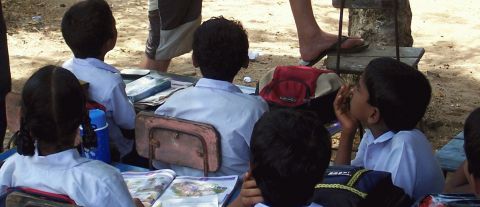Study guide with Principles of Cognitive Neuroscience
Online summaries and study assistance with the 2nd edition of Principles of Cognitive Neuroscience by Purves et al.
- For English Bulletsummaries with Principles of Cognitive Neuroscience by Purves et al., see Bulletsummaries per chapter with the 2nd edition
- For Dutch Booksummaries with Principles of Cognitive Neuroscience by Purves et al. see Samenvatting bij de 2e druk
- For English Practice exams with Principles of Cognitive Neuroscience by Purves et al. see Examtests with the 2nd edition
- For summaries and practice exams with earlier editions of Principles of Cognitive Neuroscience by Purves et al., see Study guide with Principles of Cognitive Neuroscience by Purves et al.
Related content on joho.org
Meer lezen over studie, stage en samenvattingen
Gerelateerde pagina's
Biopsychologie en neurologie studeren en stage in het buitenland
Psycholoog en coach in het buitenland via betaald werk, stage of vrijwilligerswerk
Werken in de zorg verzekeren en medische werkzaamheden in het buitenland tijdens werk, co-schap, stage of vrijwilligerswerk
Medische vaardigheden: leren of versterken
Relaties en meer lezen
JoHo: crossroads via de bundel
- Wat zijn neuronen en wat zijn cellen?
- Samenvatting van Abnormal Psychology: The Science and Treatment of Psychological Disorders van Kring et al.
- Samenvatting van Anxiety van Rachman
- Samenvatting van Attention: Theory and Practice van Johnson & Proctor
- Samenvatting van Behavioral Genetics van Plomin e.a.
- Samenvatting van Biological Psychology van Kalat
- Samenvatting van Brain and Behavior Custom UU edition van Kalat and Cacioppo et al. - 2023/2024
- Samenvatting van Cognitive Neuroscience: The Biology of the Mind van Gazzaniga et al.
- Samenvatting van Consciousness: An Introduction van Blackmore & Troscianko
- Samenvatting van Developmental cognitive neuroscience van Johnson e.a.
- Samenvatting van Developmental Neuropsychology: A Clinical Approach van Anderson et al.
- Samenvatting van Emotion Science van Fox
- Samenvatting van Essential Neuroscience van Siegel & Sapru
- Samenvatting van Fractured Minds: A Case-Study Approach to Clinical Neuropsychology van Ogden
- Samenvatting van Fundamentals of Human Neuropsychology van Kolb & Whishaw
- Samenvatting van How the Special Needs Brain Learns van Sousa
- Samenvatting van Human Factors in Simple and Complex Systems van Proctor & van Zandt
- Samenvatting van Memory van Baddeley et al.
- Samenvatting van Methods in Social Neuroscience van Harmon-Jones & Beer
- Samenvatting van Neuropsychological Assessment van Lezak et al.
- Samenvatting van Neuropsychologische Diagnostiek: de klinische praktijk van Hendriks et al.
- Samenvatting van Physiology of Behavior van Carlson
- Samenvatting van Principles of Cognitive Neuroscience van Purves et al.
- Samenvatting van Psychology of Emotion: Interpersonal, Experiential, and Cognitive Approaches van Niedenthal e.a.
- Samenvatting van The Neuroscience of Clinical Psychiatry van Higgins & George
- Samenvatting van The Neuroscience of Human Relationships van Cozolino
- Samenvatting van The Students Guide to Cognitive Neuroscience van Ward
- Samenvatting van The Student’s Guide to Social Neuroscience van Ward
- Psychologie en Gedragswetenschappen: uitgelichte boeksamenvattingen
- Samenvatting van Neurologie van Hijdra
- Samenvatting van Essential Neuroscience van Siegel & Sapru
- Samenvatting van Neuroanatomy through Clinical Cases van Blumenfeld
- Samenvatting van Neuroanatomy: an Illustrated Colour Text van Crossman & Neary
- Samenvatting van Principles of Cognitive Neuroscience van Purves et al.
- Samenvattingen en studiehulp voor geneeskunde, gezondheid en zorgopleidingen
Biopsychologie en neurologie studeren en stage in het buitenland
Activiteiten
Nieuws
Partners: met impact
JoHo WorldSupporter: crossroads
JoHo: crossroads in spotlight
- 1 van 4
- volgende ›
Chapters
Teksten & Informatie
JoHo: paginawijzer
JoHo 'chapter 'pagina
Wat vind je op een JoHo 'chapter' pagina?
- JoHo chapters zijn tekstblokken en hoofdstukken rond een specifieke vraag of een deelonderwerp
Crossroad: volgen
- Via een beperkt aantal geselecteerde webpagina's kan je verder reizen op de JoHo website
Crossroad: kiezen
- Via alle aan het chapter verbonden webpagina's kan je verder lezen in een volgend hoofdstuk of tekstonderdeel.
Footprints: bewaren
- Je kunt deze pagina bewaren in je persoonlijke lijsten zoals: je eigen paginabundel, je to-do-list, je checklist of bijvoorbeeld je meeneem(pack)lijst. Je vindt jouw persoonlijke lijsten onderaan vrijwel elke webpagina of op je userpage
- Dit is een service voor JoHo donateurs en abonnees.
Aanmelden
- Hier kun je naar de pagina om je aan te sluiten bij JoHo, JoHo te steunen en zelf en volledig gebruik te kunnen maken van alle teksten en tools.
Aanmelding: checken
- Hier vind je wat jouw status is als JoHo donateur of abonnee
Prints: maken
- Dit is een service voor wie bij JoHo is aangesloten. Wil je een tekst overzichtelijk printen, gebruik dan deze knop.
JoHo: aanmelden of upgraden
JoHo: footprint achterlaten




















